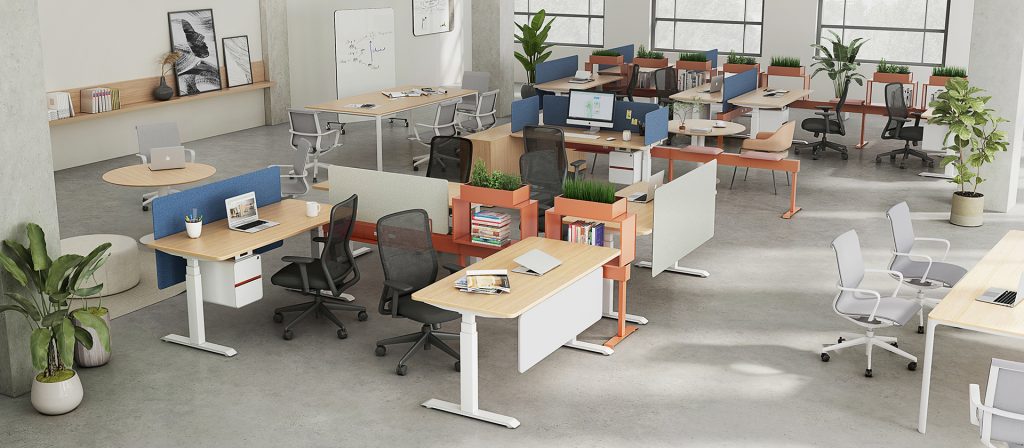- Office Partitions
- Desk & Table
- Seating
- Office Storage
- Office Furniture Accessories
- Custom-made
- ALL PRODUCTS
Author: Xinda Clover

In today’s compact work environments, integrating office desk and storage efficiently is key to creating a functional, clutter-free workspace. Whether you’re working from home or in a shared office, strategic design can transform limited square footage into a productivity hub. Below are actionable tips to maximize space while keeping office desk and storage at the heart of your layout.
Multi-Functional Furniture: The Ultimate Space-Saver
Invest in office desk and storage combinations that serve dual purposes. For example, a compact desk with built-in drawers or overhead shelves eliminates the need for separate filing cabinets. Corner desks or wall-mounted folding desks are ideal for tight corners, while floating desks paired with vertical storage units create a seamless workflow.
Pro Tip: Choose desks with hidden compartments (e.g., keyboard trays or cable ports) to keep surfaces clutter-free.
When floor space is scarce, leverage walls for office desk and storage. Install floating shelves above your desk for books, binders, or decor. Pegboards or magnetic strips can hold tools, notes, or even small plants. For deeper storage, wall-mounted cabinets with doors maintain a sleek look while hiding away office supplies.
Example: A tall, narrow bookshelf next to your desk provides easy access to files without encroaching on your work area.
Flexible Layouts for Dynamic Workstyles
Modular office desk and storage units let you reconfigure your space as needs evolve. Stackable plastic drawers, rolling carts, or cube organizers can shift from desk extensions to supply closets. Consider a mobile printer stand that doubles as a side table or a folding partition to separate work zones.
Bonus: Use adhesive hooks or under-desk baskets for headphones, bags, or cables.
Hide It, Don’t Highlight It
A tidy workspace starts with smart office desk and storage. Use under-desk cable trays or adhesive clips to route cords neatly. Opt for furniture with concealed compartments, like ottomans with hidden storage or desks with pull-out drawers for laptops.
Idea: A bench with built-in bins near your desk can store seasonal items or extra office supplies.
Tricks to Open Up Small Areas
Light hues (whites, creams, soft blues) reflect light, making rooms feel larger. Pair with LED strip lights under shelves or behind monitors to add depth without bulky lamps. Mirrors strategically placed opposite windows can also amplify natural light.
Visual Tip: A single bold accent (e.g., a red storage basket) draws the eye without overwhelming the space.
Small Footprint, Big Comfort
Even in tight spaces, prioritize posture. Choose a compact office chair with adjustable height and lumbar support. A monitor riser frees up desk space while positioning screens at eye level. For standing desks, opt for foldable models that tuck away when not in use.
Quick Fix: Use a laptop stand to elevate your screen and create room for a notebook or mousepad.
Rotate, Don’t Accumulate
Seasonal items (e.g., winter coats or holiday decor) take up valuable office desk and storage space. Store off-season essentials in labeled bins under the bed or in a closet. Each month, audit your workspace to discard or donate unused items.
Final Touch: Add low-maintenance greenery (e.g., a snake plant) to boost air quality and mood.
A well-designed small office hinges on smart integration of office desk and storage. By prioritizing multi-functional furniture, vertical solutions, and regular decluttering, you can turn even the tiniest corner into a hub of efficiency. Remember: the goal isn’t just to save space—it’s to create a workspace that inspires creativity and keeps you focused, one compact solution at a time.